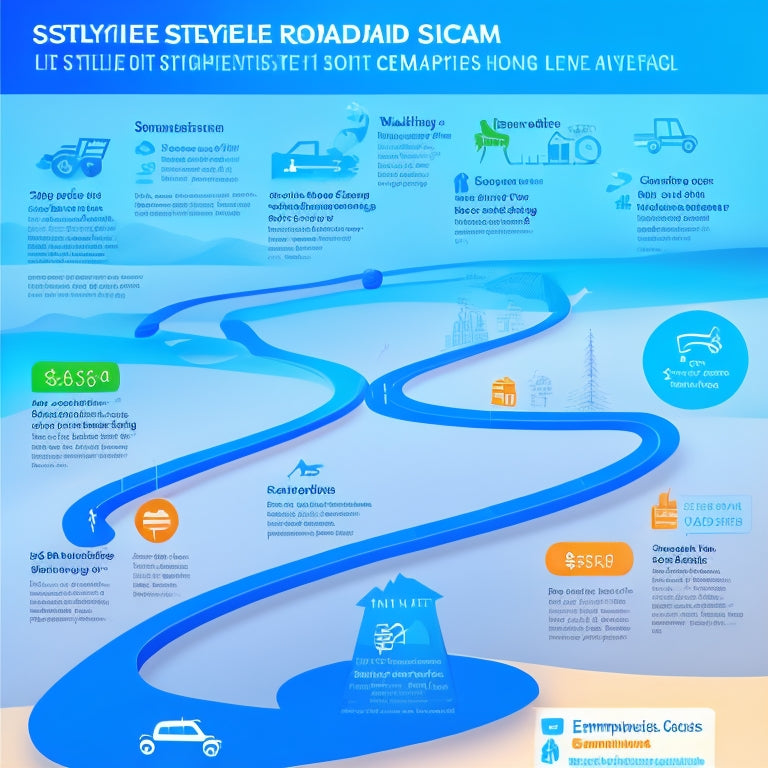
3 Best Digital Product Roadmaps for Ecommerce Success
Share
You're about to discover the three digital product roadmaps that are instrumental in catapulting ecommerce businesses to success, starting with the foundation of data-driven product development that has been shown to increase the chances of launching a winning product by up to 85%. Next, you'll leverage customer journey mapping tools to visualize customer pain points and optimize the user experience. Finally, you'll prioritize features and releases by separating 'nice-to-haves' from 'must-haves' to allocate resources effectively. By implementing these roadmaps, you'll be well on your way to ecommerce success - and there's much more to explore in the world of digital product development.
Key Takeaways
• A data-driven approach to product development reduces the risk of launching a failing product by up to 85% by incorporating customer insights and market trends.
• Effective digital product roadmaps prioritize features and releases based on customer needs, business value, and technical complexity to maximize impact.
• Customer journey mapping tools help visualize customer pain points, enabling the design of a more intuitive and user-friendly experience that increases conversions.
• A customer-centric vision is turned into reality by separating 'nice-to-haves' from 'must-haves' in the feature backlog and allocating resources to high-impact initiatives.
• Digital product roadmaps for ecommerce success should consider features such as AI-powered product recommendations, mobile app redesign, and multi-language support to stay ahead of the competition.
Data-Driven Product Development
By leveraging data-driven product development, you can increase your chances of launching a winning product by up to 85%, as informed decisions based on customer insights and market trends substantially reduce the risk of product failure.
This approach enables you to create products that meet real customer needs, rather than relying on intuition or guesswork. To achieve this, you'll need to adopt agile development strategies that incorporate user feedback and continuous iteration. This means building a minimum viable product (MVP), testing it with real users, and refining it based on their feedback.
Additionally, conduct thorough competitive analysis and market research to stay ahead of the competition. Analyze your competitors' strengths and weaknesses, and identify market gaps that your product can fill. By combining these strategies, you'll be able to create a product that meets customer needs, stays ahead of the competition, and drives business success.
Customer Journey Mapping Tools
You'll need to visualize your customer's thoughts, feelings, and pain points at every touchpoint to fully understand their needs, and customer journey mapping tools can help you do just that. These tools allow you to create a visual representation of your customer's experience, identifying areas of friction and opportunities for improvement. By mapping their journey, you'll gain a deeper understanding of their needs and preferences, enabling you to design a more intuitive and user-friendly experience.
Here are some key benefits of customer journey mapping tools:
-
Enhanced user experience: By understanding your customer's pain points, you can design a more seamless and intuitive experience that meets their needs.
-
Conversion optimization: Identifying areas of friction in the customer journey can help you optimize your website and increase conversions.
-
Data-driven decision making: Customer journey mapping tools provide valuable insights that can inform product development and marketing strategies.
Prioritizing Features and Releases
As you explore the world of digital product roadmapping, prioritizing features and releases becomes an essential step in turning your customer-centric vision into a tangible reality. This is where you'll separate the "nice-to-haves" from the "must-haves" in your feature backlog, ensuring that you're allocating resources to the most impactful initiatives.
To prioritize effectively, consider the following factors:
| Feature | Business Value | Technical Complexity |
|---|---|---|
| Search Bar Optimization | High | Low |
| AI-Powered Product Recommendations | Medium | High |
| Mobile App Redesign | High | Medium |
| Social Media Integration | Low | Low |
| Multi-Language Support | Medium | High |
Frequently Asked Questions
How Often Should I Update My Digital Product Roadmap?
You should update your digital product roadmap regularly, ideally every 2-3 months, to maintain consistency and balance agility with stability, allowing you to adapt to changing priorities while maintaining a clear direction.
Who Should Own the Digital Product Roadmap in an Ecommerce Company?
You should assign ownership of the digital product roadmap to a cross-functional product team, with executive leadership oversight, ensuring aligned goals and strategic direction, while empowering the team to drive ecommerce success.
Can I Use a Digital Product Roadmap for Physical Products Too?
You can definitely use a digital product roadmap for physical products, as it's about strategic planning, not product type. Its flexibility allows you to adapt it to your physical product's unique needs and goals.
How Do I Handle Conflicting Priorities in My Roadmap?
When conflicting priorities arise, you'll need stakeholder alignment to make roadmap adjustments, managing trade-offs by prioritizing must-haves. Clearly communicate these changes to avoid confusion, ensuring everyone's on the same page to drive ecommerce success.
Is a Digital Product Roadmap the Same as a Project Plan?
You understand that a digital product roadmap isn't the same as a project plan, as it focuses on high-level resource allocation and timeline management, while a project plan outlines specific tasks, ensuring stakeholder communication and goal alignment.
Related Posts
-
The Rise Of Tiktok For Social Commerce
TikTok has emerged as a powerful platform for social commerce, attracting a significant following and providing brand...
-

Why and How to Create a Sitemap for Improved SEO
This article explores the significance of creating a sitemap for enhanced search engine optimization (SEO) and provi...
-

What Is the Best Pop-Up for Shopify
This article aims to provide an in-depth analysis of the best pop-up options for Shopify. It explores the benefits o...

